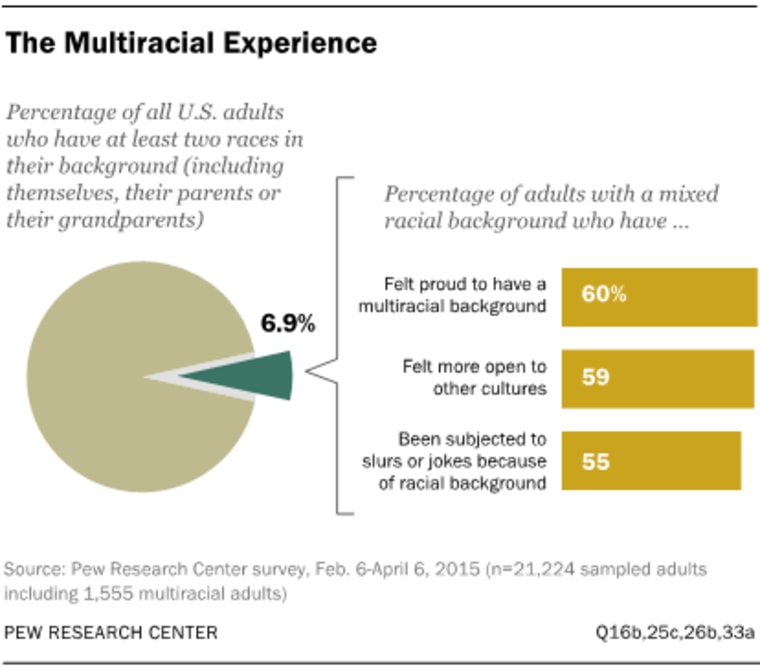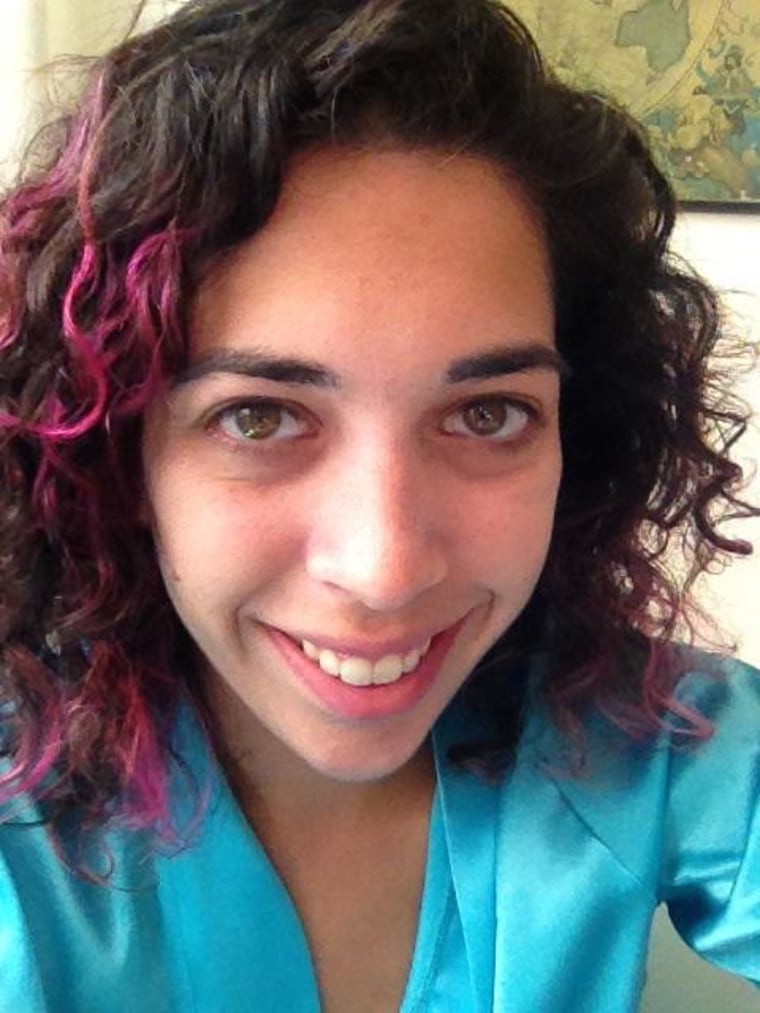"Okay, this might be weird, but let's start a project."
When freelance journalist Jaya Saxena tweeted that thought last Tuesday, she didn't expect the hundreds of multiracial people on Twitter who would respond.
Saxena, who identifies her ancestry as Indian and white, posted a photo of herself to encourage Twitter users who identify as biracial or mixed-race to share their own experiences. She started the hashtag #BiracialLooksLike after a conversation one night with a biracial friend to see if people would respond.
Hundreds of multiracial Twitter users quickly replied to Saxena’s call, posting photos of themselves and their families. “I don’t want to be the face of this," Saxena told NBC News. "There should not be one face of this. The whole point [of the hashtag] is the plurality of experience."
Some people used the hashtag to show pride; others expressed their struggles, such as having to choose between different cultures and being treated like an outsider by the ethnic group of a parent.
Saxena told NBC News that people sometimes mistake her for being white. “They won’t know until later that I’m not really what they think I am," she said. "I’ve had times people being outright racist about Indians to me, not knowing my background."
Saxena further explained the rationale of her Twitter movement in a recent editorial, writing that her hashtag was meant to create a “place for anyone who self-identifies as biracial and is comfortable posting selfies, and a way to show everyone else that there is no one way for biracial to look. Also, perhaps, it could make the experience of being of mixed heritage not so isolating."
"There is no one way for biracial to look."
The population of multiracial Americans in America is growing three times as fast as the US population as a whole, according to a recent report from the Pew Research Center. The same Pew study also found that a majority of mixed-race Americans feel a common bond with other mixed-race people, even with those whose combination of racial backgrounds is different.

Saxena told NBC News that there is no one way for “prejudice or microaggressions” to play out for mixed-race people because of the variety of racial combinations. “But I think there’s some understanding and undercurrents of feeling like you don’t always quite know where you belong. You don’t always feel entirely related to one or another side.”
Saxena believes that mixed-race people are often “fetishized.” “There are a lot of people that see mixed race people as some sort of proof that racism doesn’t have to exist, that if people from two different races can come together and make a baby everything gets solved, and that’s not true.”
“We [biracial people] are not a rainbow at the end of the civil rights path.”
In her editorial, Saxena wrote, “We [biracial people] are not a rainbow at the end of the civil rights path.” She says that the idea of an increasing multiracial population will inevitably dismantle racism is “a lazy way out.”
“It’s something a lot of people use for this fantasy," she said. "So they don’t really have to reckon with the ways racism and prejudice affect mixed race people a lot.”
